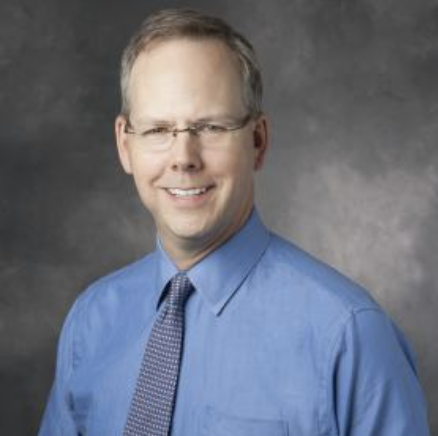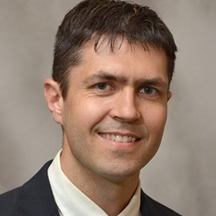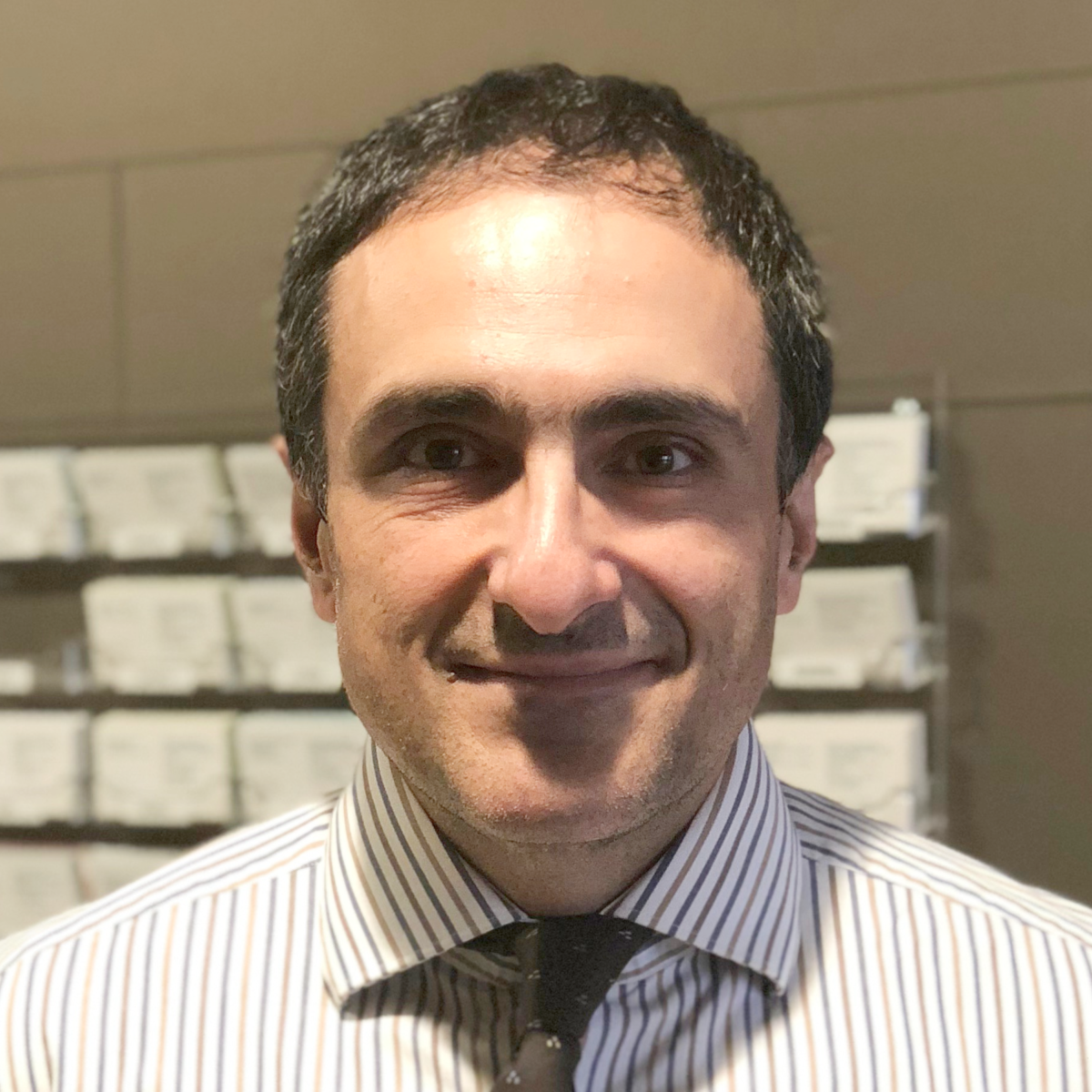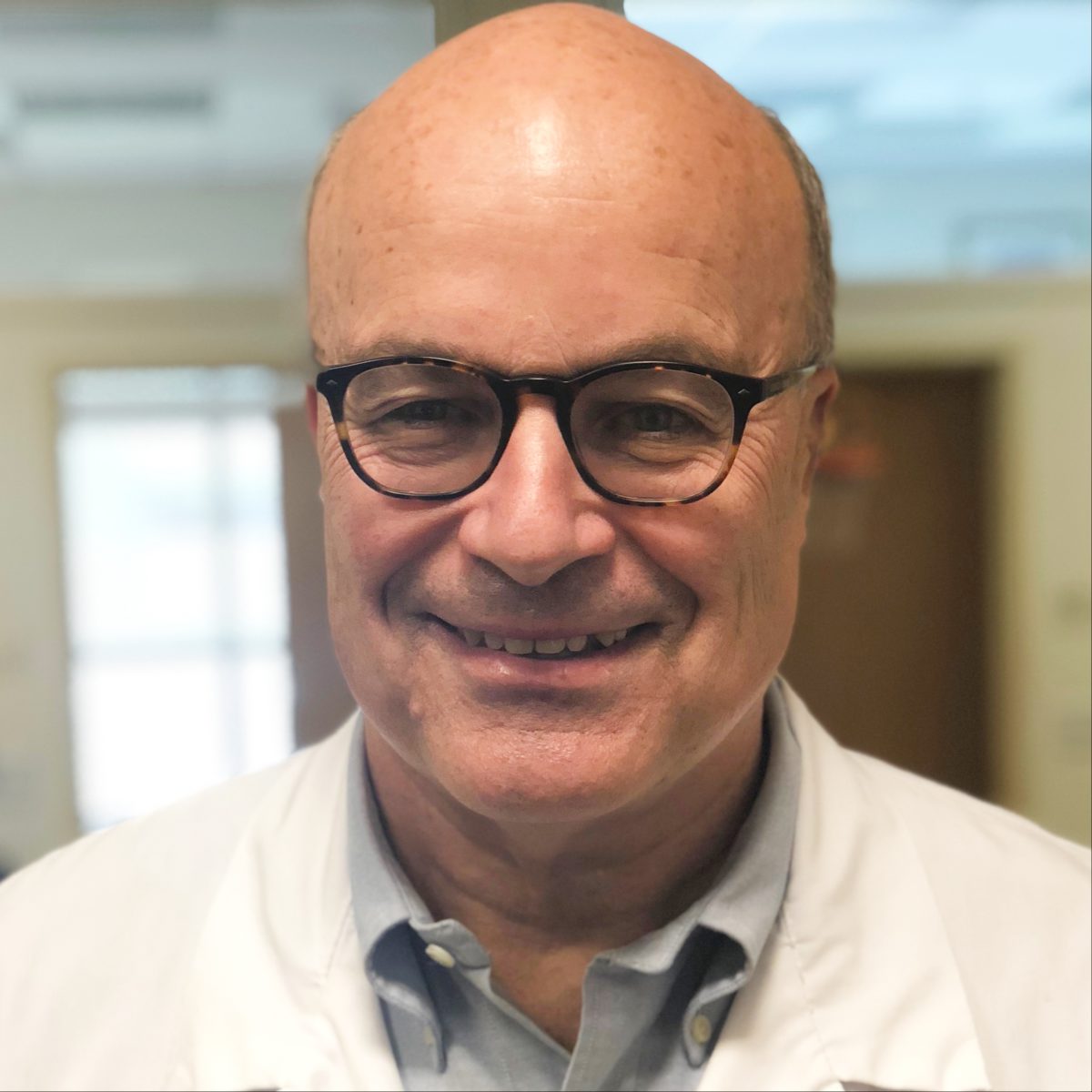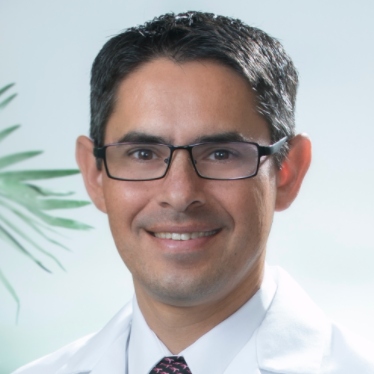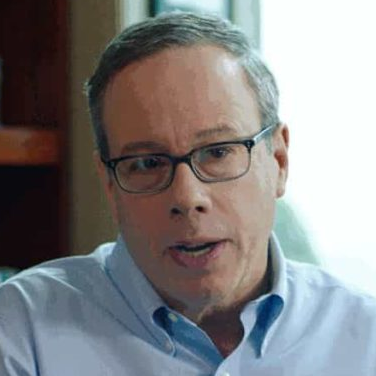Mantle Cell Lymphoma Treatment
David Miklos, MD, Ph.D
Hear from David Miklos, MD, Ph.D, an experienced and passionate specialist in blood and marrow transplants, as well as immunotherapy research.
As Chief of BMT & Cell Therapy, and Clinical Director of the Cancer Cell Therapy program at Stanford University Medical Center, Dr. Miklos spends his time not only seeing patients but also focusing on the latest science in cancer therapies.
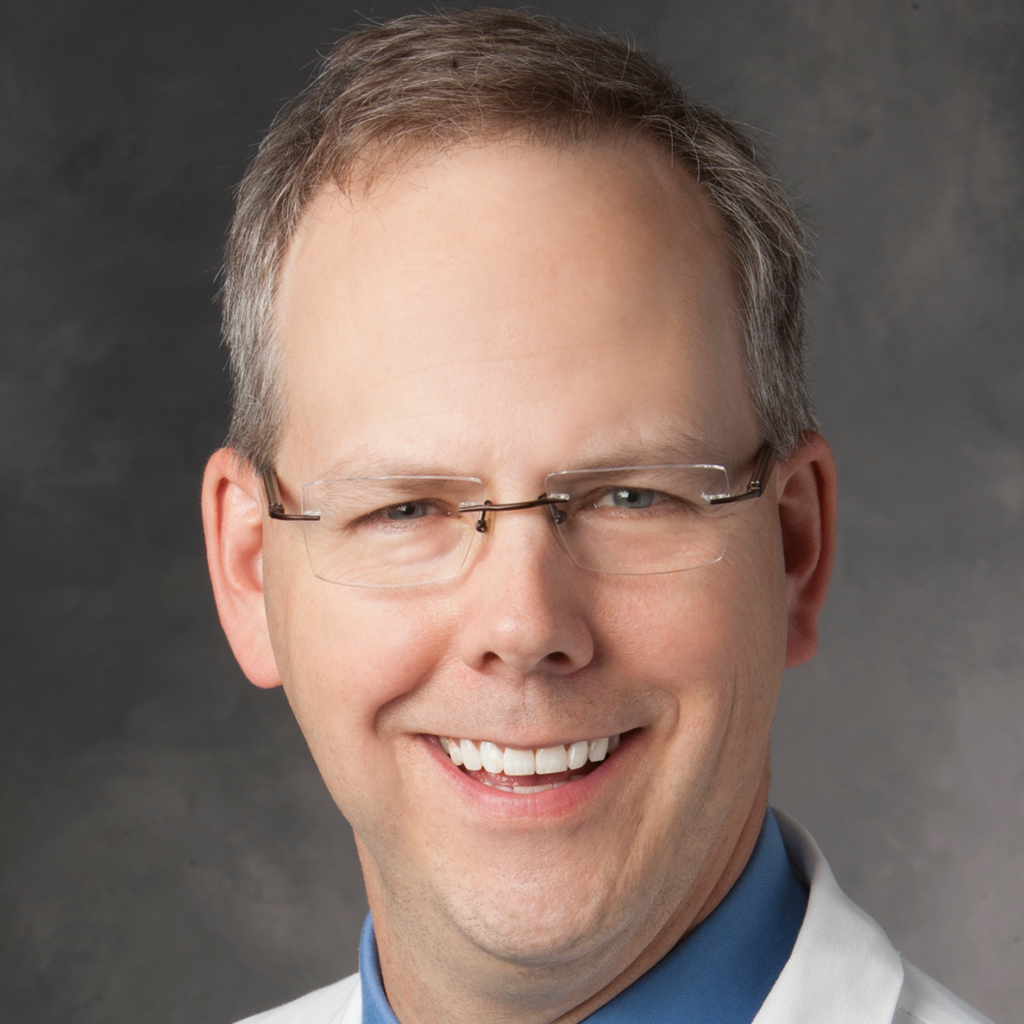
- Name: Dr. David Miklos
- Specialty: Blood and marrow transplant
- Roles:
- Chief of BMT & Cell Therapy
- Clinical Director Cancer Cell Therapy, Stanford University (2016 – Present)
- Experience: 25+ years
- Provider: Stanford Medical Center
We’d like to cure more and more diseases. What is cured?
People ask me all the time, ‘Am I cured?’ The difference between remission, where we have no measure of your cancer anymore on a scan or bone marrow or blood test, and a cure, is time.
Dr. David Miklos
- Video: Dr. Miklos on Mantle Cell Lymphoma Treatment
- Mantle Cell Lymphoma Treatments Have Improved
- Small molecule inhibitors
- Role of allogeneic bone marrow transplants
- Role of CAR T therapy
- Newest study: ZUMA-2 clinical trial
- New clinical trial
- What are the drawbacks of this newest therapy
- Balance between therapy efficacy and adverse effects
- Why patients should consider clinical trials
Video: Dr. Miklos on Mantle Cell Lymphoma Treatment
Mantle Cell Lymphoma Treatments Have Improved
Mantle cell is kind of the story of my life. An interesting story. When I was training back at Harvard in 1995, mantle cell lymphoma was first being recognized because we needed some antibody test to be able to tell the difference of these immature lymphocytes.
The very first patient I actually diagnosed was a person who had lymphadenopathy in my internship clinic, where usually I was treating diabetes or hypertension. The therapy was terrible.
Using CHOP chemotherapy had only a three-year overall survival. Rituximab added very little benefits to those patients. But there was development of small molecule inhibitors that are interfering with the signal from the b-cell receptor to the division inside the nucleus.
Small molecule inhibitors
These are drugs your people have heard of like ibrutinib, a drug that targets the Bruton’s tyrosine kinase (BTK) inhibitor. There are also other drugs.
Ibrutinib was the first and certainly the most widely-used drug. A pill you take once a day that covalently links and binds and inhibits the BTK molecule. That cell was done. The importance of that therapy where everybody responds, and yet, there are patients with about a 20- to 25-percent risk per year of progression.
Once we lose that very special target, we can go onto some other medicines like venetoclax, which has also shown benefit in the mantle cells.
But we’ve been looking for something better.
We’ve tried high-dose chemotherapy. I’m a stem cell transplanter, so the notion of using high-dose chemotherapy with stem cell rescue or what your patients will know as an “auto transplant” has provided much benefit to the patients of mantle cell lymphoma.
It moves out the expected overall survival from three to six years or more. There’s a role for maintenance rituximab, FDA-approved, and has benefits in patients, and the small molecule inhibitors, ibrutinib, venetoclax, which we just discussed.
But where’s the home run?
Where’s the targeted immunotherapy that is going to eliminate this cancer and provide the patient a long term cure?
Role of allogeneic bone marrow transplants
Some of your patients may have had an allogeneic transplant which is truly the immune therapy of some else’s immune system.
Maybe it’s a brother or sister or HLA-identical donor whose blood destroys the white cells, red cells, and regrows and reconstitutes the normal blood system.
In the process of getting rid of the patient’s blood system, it gets rid of the white cells, the lymphocytes, the b-cells, and the mantle cell lymphoma.
The allogeneic transplant is an immune therapy. I am an allogeneic transplanter and will talk about the major side effect of allogeneic transplant which is graft-versus-host disease (GVHD).
That means the immune response is not only attacking the blood and cancer, but it’s also sometimes attacking the skin, the gut, the liver, causing detrimental, inflammatory problems that can be the real bane of the existence of the patient.
The quality of life and the difficulties with organ involvements across the whole body has been seen. Those patients are really dependent on immune suppression.
So where’s the home run? The home run is, again, CAR T.
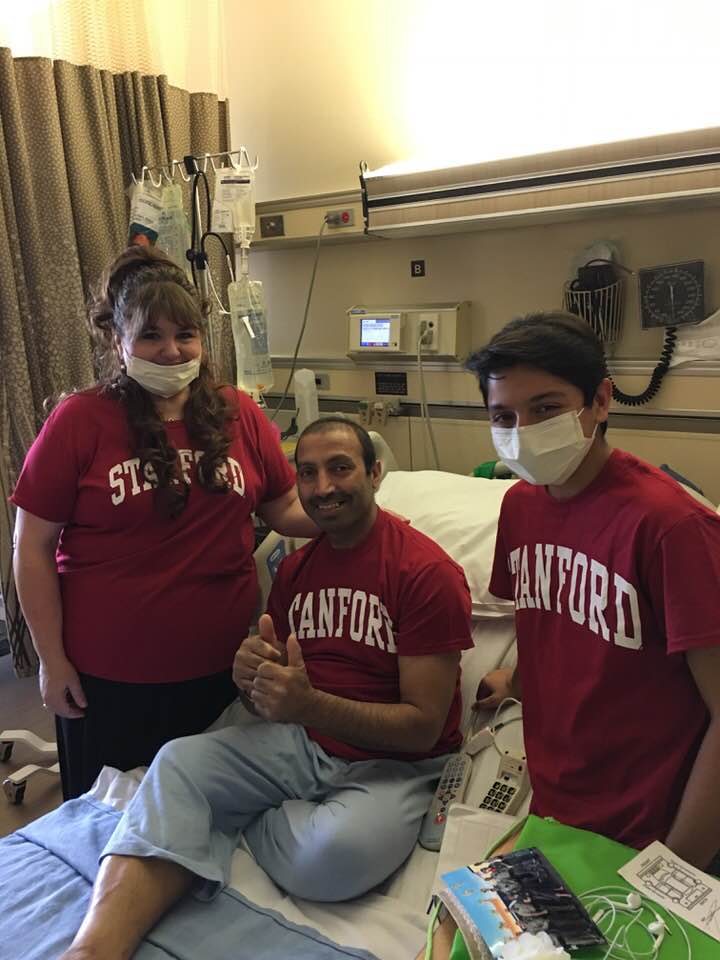
Role of CAR T therapy
The axi-cel therapy was the first FDA-approved treatment in large cell lymphoma. That company is called Kite. They were purchased by Gilead. They brought forward a very similar construct.
The actual molecule that is placed into the patient’s lymphocytes is exactly the same as what’s been used for the last three years in large cell lymphoma. So it binds the same CD19 again, same story, here comes the CAR. We’re going to bind and we’re going to then kill the cancer.
It’s prepared in a very special way because mantle cell frequently has lymphoma in the blood, so we have to separate the lymphocytes away.
That’s the unique difference between Tecartus and Yescarta. Otherwise, they’re nearly identical therapies.
And the prep to do this is the apheresis, the places where you’ll receive the therapy, the lymphodepletion chemotherapy, and the three days before we put the special cells in. It’s all the same. The follow-up stay in the hospital, seven to ten days, staying locally for 28 days, it’s all the same.
The expected toxicities of cytokine release syndrome, that’s the fever, achy, flu-like symptoms, or the confusion and neurological problems that can follow patients who have had the cytokine release syndrome, again, very similar incidents.
Newest study: ZUMA-2 clinical trial
Here’s the excitement: the excitement is in that study you addressed called ZUMA-2, which began in 2017, there were 60 patients treated and this overall response rate was 93-percent.
The overall complete response rate, couldn’t find the cancer, was 67-percent.
Two-thirds of the patients, 28 days after given this Tecartus infused in their body, had no measurable cancer, a complete response. That response has remained durable. The publication that is responsible for the FDA’s approval showed 27 months of follow-up in patients.
That’s just over two years, so let’s not get carried away. We have two years of follow-up and in that population, the response rate was 43-percent remaining in complete response and 67-percent overall response.
So it’s very durable. Probably even more durable than what we saw in the original treatment with axi-cel in large cell lymphoma. There are similar side effects and it still needs to be done inside the hospital at centers that have experience managing patients with CAR T therapy. The higher response rates and they appear to be very durable treatments.
These are for patients who had had three lines of therapy previously, so they probably had CHOP, or bendamustine and rituximab, they probably had ibrutinib as one of the therapies. That trial required they had a drug that targeted the Bruton’s tyrosine kinase (BTK).
The FDA, when they made the approval of this therapy in July, recognizing what a game changer the therapy offered patients, did not require patients go through three lines of therapy.
The FDA has authorized the treatment in second line and I think that’s because they really want to help patients achieve long-term disease-free survival and benefit.
Now, physicians will have to decide who should receive BTK inhibitors and who should go right on to CAR T-cells, and that’s discussion with the patients and the families. That really is still being worked out.
»MORE: Read patient experiences with immunotherapy
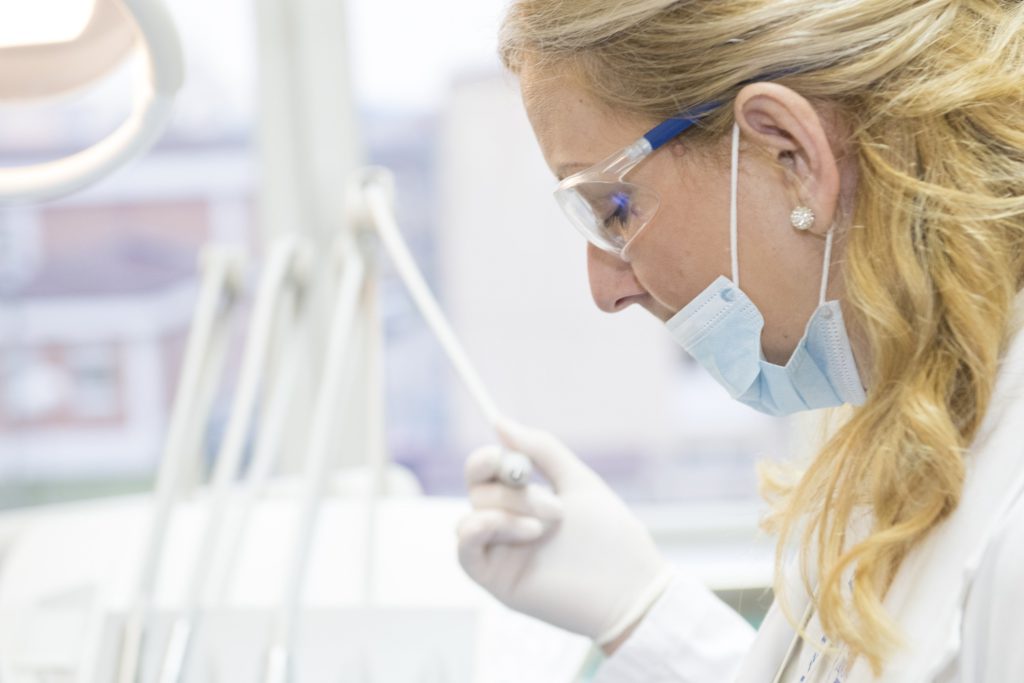
New clinical trial
We’re going to be doing a new trial where we’ll be looking at patients who’ve had ibrutinib upfront or who have not had ibrutinib yet, and using the same therapy to see what the true incidents of benefit is in that second line.
But in the meantime, there are centers that can provide commercially-available therapy with Tecartus today. If somebody’s gone through all the available therapies, that’s a lifesaver.
As we decide whether we should use CAR T-cells in second line, that’s an individual decision at this point for the patients and their doctors.
What are the drawbacks of this newest therapy
I think we have to make sure the therapy does not cause more toxicity than the patient’s need warrants.
What I think is going to happen is we’re going to see less CHOP chemotherapy up front. We’ll probably be shifting more to the kinder, gentler bendamustine-rituximab, and maybe even in combination with ibrutinib in the first-line therapy.
The intent of that is to really clear the disease, make sure we get the highest response rate possible with the lowest toxicities, and frequency of going into the hospital with side effects like neutropenic fever. We want to avoid that.
I think that’s where the field is moving. Then the key decision, and I’m the Chief of Transplant (at Stanford) so I don’t want to malign my own therapy.
But whether or not auto transplant continues to be important in the management of mantle cell versus going right on to a targeted cellular therapy, is really the next question.
So that decision needs to be made. What we’re trying to judge is what’s the risk of the patient having cytokine release syndrome or really high-impact, really debilitating neurological toxicity.
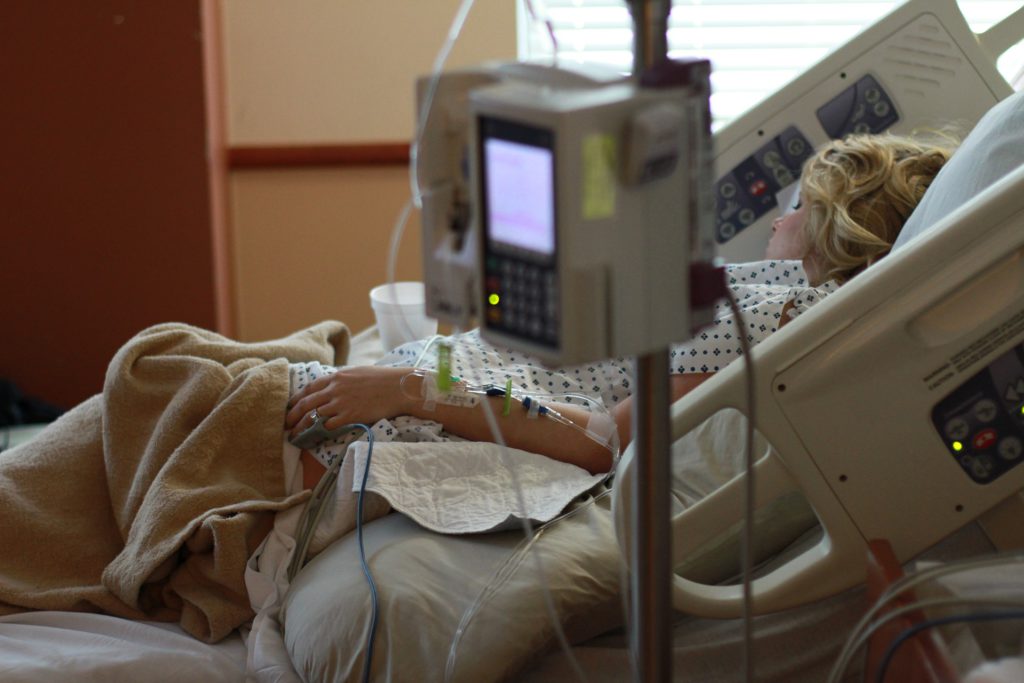
Balance between therapy efficacy and adverse effects
A grade three neurological toxicity is when the patient is really unresponsive in the hospital, just lying there, eyes open, frequently having expressive aphasia, can’t talk, can’t find the words, can’t attend. That period of time lasts usually two to three days and patients are being treated with steroids.
Young people, like us, we may have the ability to have the reserve to get through something like that and easily bounce back.
But if you were 80 years old, having a similar treatment options, and trying to decide, I imagine the ibrutinib therapy would be the more appropriate, at least until it’s not working.
While patients are receiving those better-tolerated, maybe not curative therapies with very good efficiency or efficacy, we’re working on new therapies. We’re working on kinder, more gentler therapies, with less toxicities.
The companies we’re mentioning here are fully committed to trying to improve these treatments. Whereas maybe the drugs you took for your blood pressure and your diabetes are still the same drugs after 20 years, these drugs will not be the same drugs after five years.
We will be moving the development curve cycle into a very rapid change, because knowledge is what is going to drive the next therapy.
As we learn how to help the patients, how to improve the treatments, what happens as the universities will quickly disseminate through pharmaceutical companies to the patients’ care.
Why patients should consider clinical trials
It’s a very exciting time. It’s these small clinical trials that are able to demonstrate clinical benefit, but at the same time, we’re collecting blood samples and lymph node samples that allow us to test questions like:
- How did it work?
- How did the CAR expand?
- Did it go into the lymph node?
- Did the lymph node stop making the target?
- How do we make this treatment better?
We call that the virtuous cycle of correlative clinical trials and that’s what these large academic centers are all about. We’re trying to turn that cycle as fast as we can.
That’s a partnership with our patients, so when your patients go to a cancer center and the doctor says, “We have a clinical research trial and we have the standard of care,” it’s important to listen closely.
There are very good treatments in the upfront use of tisa-cel, axi-cel, and soon, liso-cel, so we want to be able to offer those therapies to people with 60-percent complete response rates.
But if you are having a recurrence of disease after that therapy, or that therapy is not appropriate, then it’s important to consider participating on a clinical trial in order to get access to the more promising treatments.
That’s the hardest conversation. Bring all your friends, bring your family to the doctor’s visit. You’re going to need lots of ears to be listening to why you should do this or could consider these other options.
Your doctor should be making recommendations, but you, too, have to participate as you consider the benefits and the risks.
Dr. David Miklos’ Full Interview on Video
Other Oncologists
Dr. Christopher Weight, M.D.
Role: Center Director Urologic Oncology
Focus: Urological oncology, including kidney, prostate, bladder cancers
Provider: Cleveland Clinic
...
Doug Blayney, MD
Oncologist: Specializing in breast cancer | HER2, Estrogen+, Triple Negative, Lumpectomy vs. Mastectomy
Experience: 30+ years
Institution: Stanford Medical
...
Dr. Kenneth Biehl, M.D.
Role: Radiation oncologist
Focus: Specializing in radiation therapy treatment for all cancers | Brachytherapy, External Beam Radiation Treatment, IMRT
Provider: Salinas Valley Memorial Health
...
James Berenson, MD
Oncologist: Specializing in myeloma and other blood and bone disorders
Experience: 35+ years
Institution: Berenson Cancer Center
...
